SUSTAINABILITY AND HEALTH AWARD: Universal values
Social Housing in Ibiza by Pep Ripoll Vaquer and Juan Miguel Tizón Garau.
Promoters: Institut Balear de l'Habitatge (IBAVI).
Location: Ibiza, Balearic Islands.
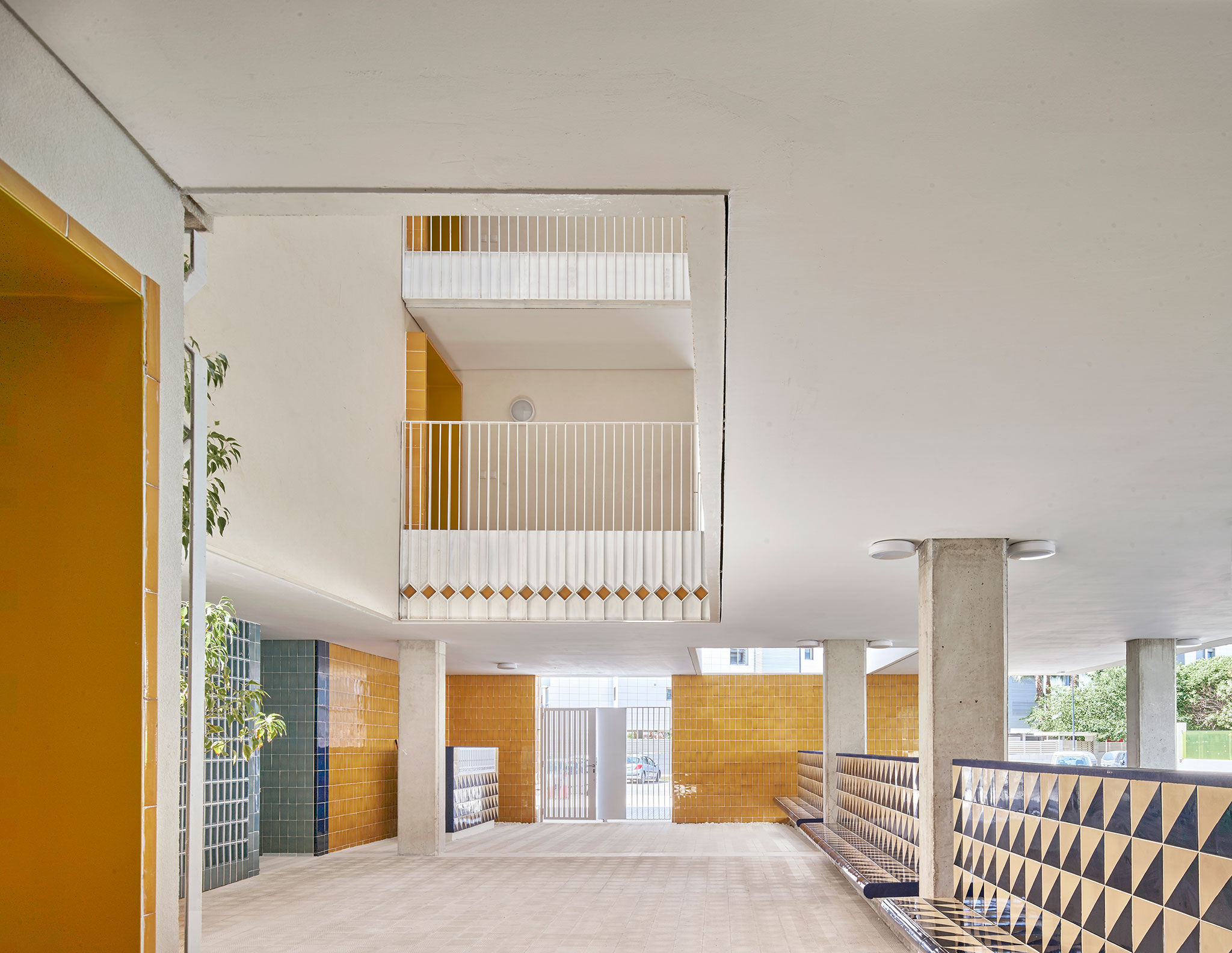
Sustainability and health award. Social housing in Ibiza by Ripoll-Tizón. Photograph by José Hevia.
The building is located on the border between a residential area and a floodplain area in Ibiza. It seeks to get away from the existing environment and take inspiration from the popular architecture of the island, with white walls, solar protections, and shaded spaces. The proposal consists of a group of stacked and attached houses, with an interior space that connects patios and porches, creating community areas. The car park is located on the ground floor due to the nearby water table. 19 homes distributed on the upper floors are built, all with good lighting and cross ventilation. Sustainability is prioritized with an A energy rating, using natural lighting, renewable energy and efficient technologies.
Wildgarten Quartier Wien by Arenas Basabe Palacios Arquitectos (Enrique Arenas Laorga, Luis Basabe Montalvo and Luis Palacios Labrador); M&S Architekten, Vienna (urban planning), Buschina & Partner, Vienna (architecture).
Promoters: ARE (Austrian Real Estate GmbH).
Location: Madrid and Vienna.
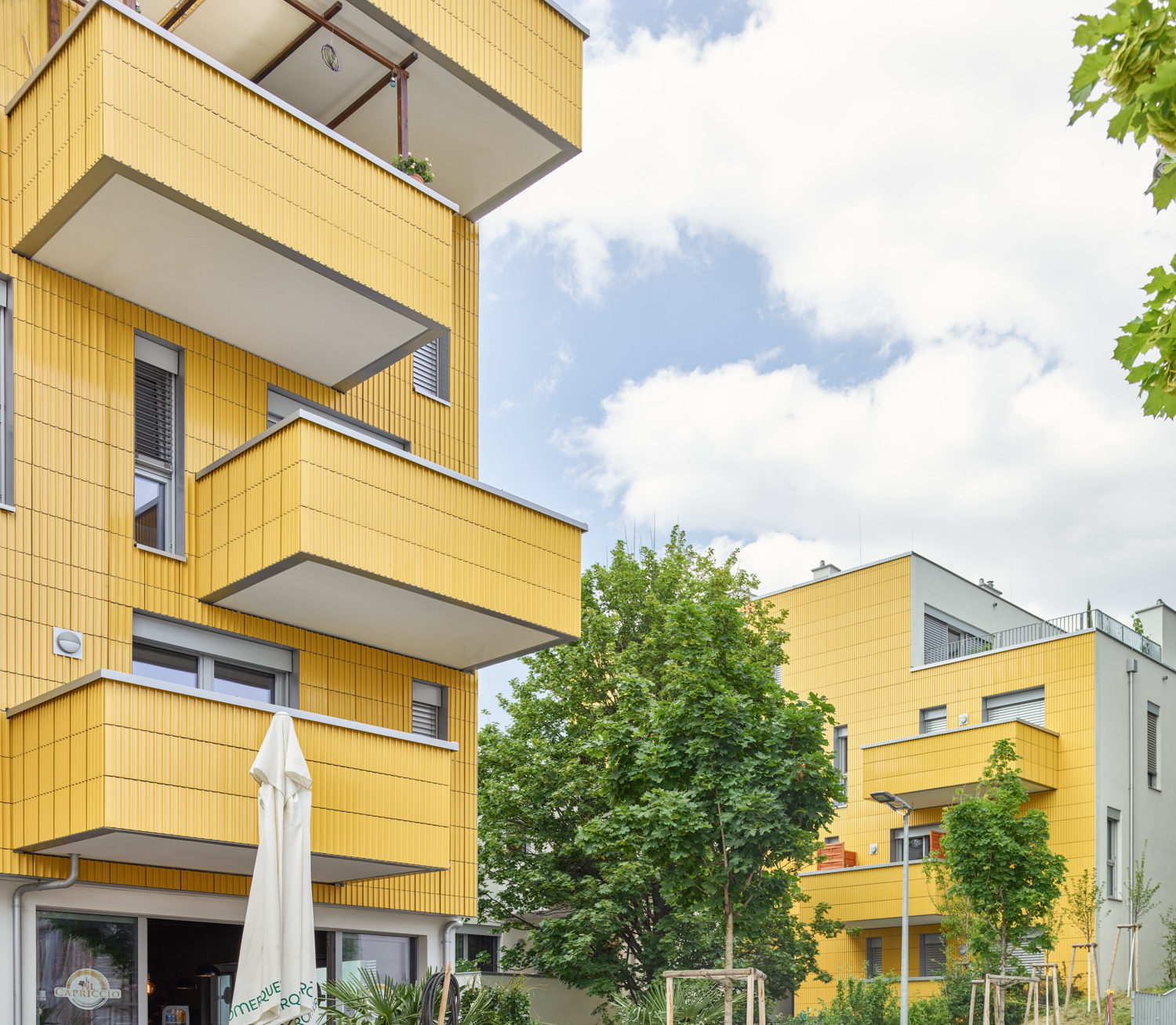
New Bauhaus Award. The Sunflower Houses by Arenas Basabe Palacios. Photograph by Kurt Hoerbst.
The Vienna Wildgarten project presents an innovative approach to inclusive and democratic urban planning for the design of a new neighborhood. Through a collaborative process and the participation of multiple stakeholders, including public entities, developers, citizens, and cooperatives, who worked together to define planning and construction management. The project is based on a matrix of gardens that structure the territory, creating extroverted plots that allow for architectural diversity and a community space called 'Allmende'. The project received recognition and is under construction, enriching the social mix of the neighborhood.
COMMITMENT AWARD: Values associated with innovation, diversification, disclosure, and diffusion
Domestic sunrises. ISSUES OF COLLECTIVE HOUSING IN 21ST CENTURY EUROPE by Carmen Espegel, Andrés Cánovas and José María de Lapuerta.
Promoters: ICO Foundation and Asymmetric Editions.
Location: Madrid.
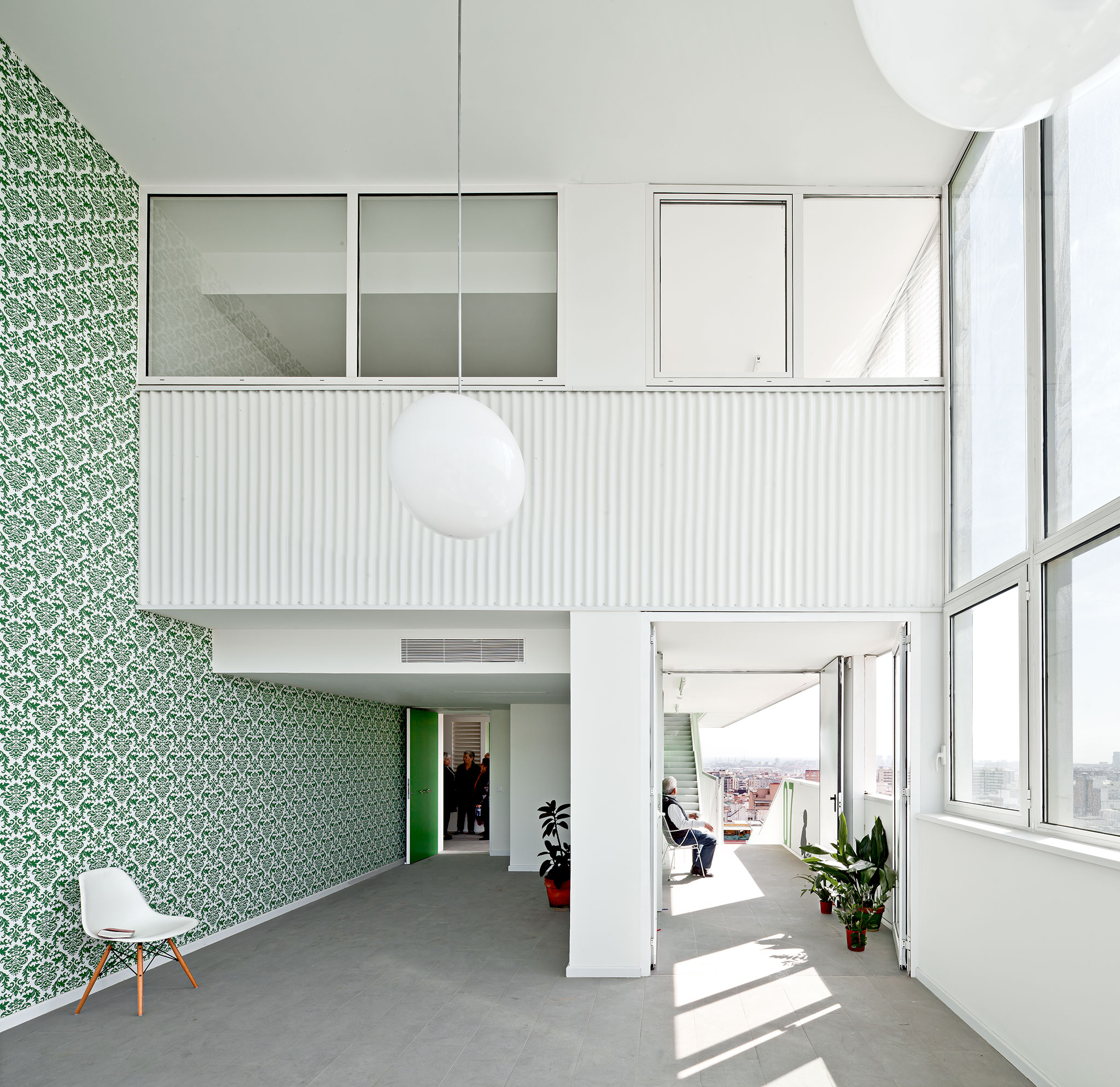
Commitment award. Domestic sunrises. Collective housing in 21st century Europe.
The book published by Ediciones Asimétricas, layout by César Ávila, from Gráfica Futura, is a compilation of the exhibition "Domestic Dawns" at the ICO Museum. The book follows "Housetag"'s research on housing in Europe in the 21st century, classifying the projects by theme. The proposal at the ICO Museum focuses on seven themes, with interviews with the inhabitants and architects of seven outstanding buildings. The works for the exhibition were redrawn and re-photographed, and relevant thinkers and news were incorporated. The book is also freely available at amaneresdomesticos.com with videos, plans, and photographs.
PROFESSION AWARD: Professional and ethical values
Initial school 140 in the community of Santa Cruz de Villacuri "Barrio Chino", Ica, Peru by Atelier Ander Bados (Ander Bados Sesma) and Estudio Copla (Betsaida Curto Reyes).
Promoters: NGO All Hands and Hearts.
Location: Peru.
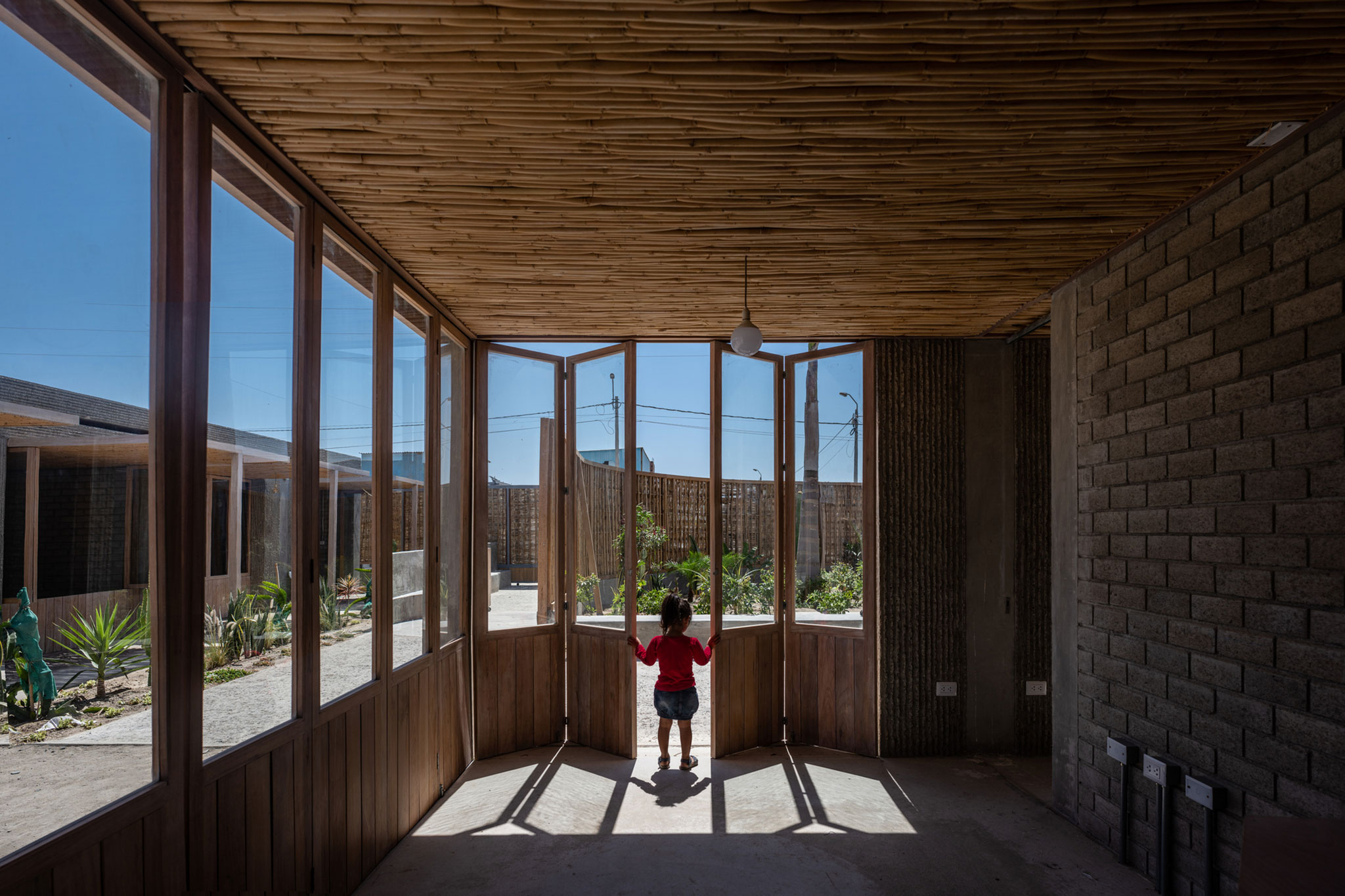
Profession award. Escuela inicial 140 por Ander Bados Sesma, Betsaida Curto Reyes. Fotografía por Eleazar Cuadros.
Villacuri is a human settlement in the Peruvian desert, the result of an invasion that began 25 years ago. It lacks urban planning and only has a few shops near the road. The lack of government attention has affected the vulnerable population, including the school, which has not been rebuilt since an earthquake in 2007. The NGO All Hands and Hearts decided to rebuild the school in 2019. The identity of the place is based on the diversity of cultures and construction techniques used. The design uses local materials that help the community itself to feel identified and dignify local construction methods. Solutions were implemented to beat the desert heat and improve security, privacy, and easy access for parents. In general, the project reflects the harshness of the environment and highlights local elements such as the wild cane and the mat.
RE AWARD FOR RENOVATION: Values associated with rehabilitation, renovation, and regeneration
Rehabilitation of offices 1822 by David Lorente; Josep Ricart; Xavier Ros; Roger Tudó - HARQUITECTES.
Promoters: Galenicum.
Location: Barcelona.
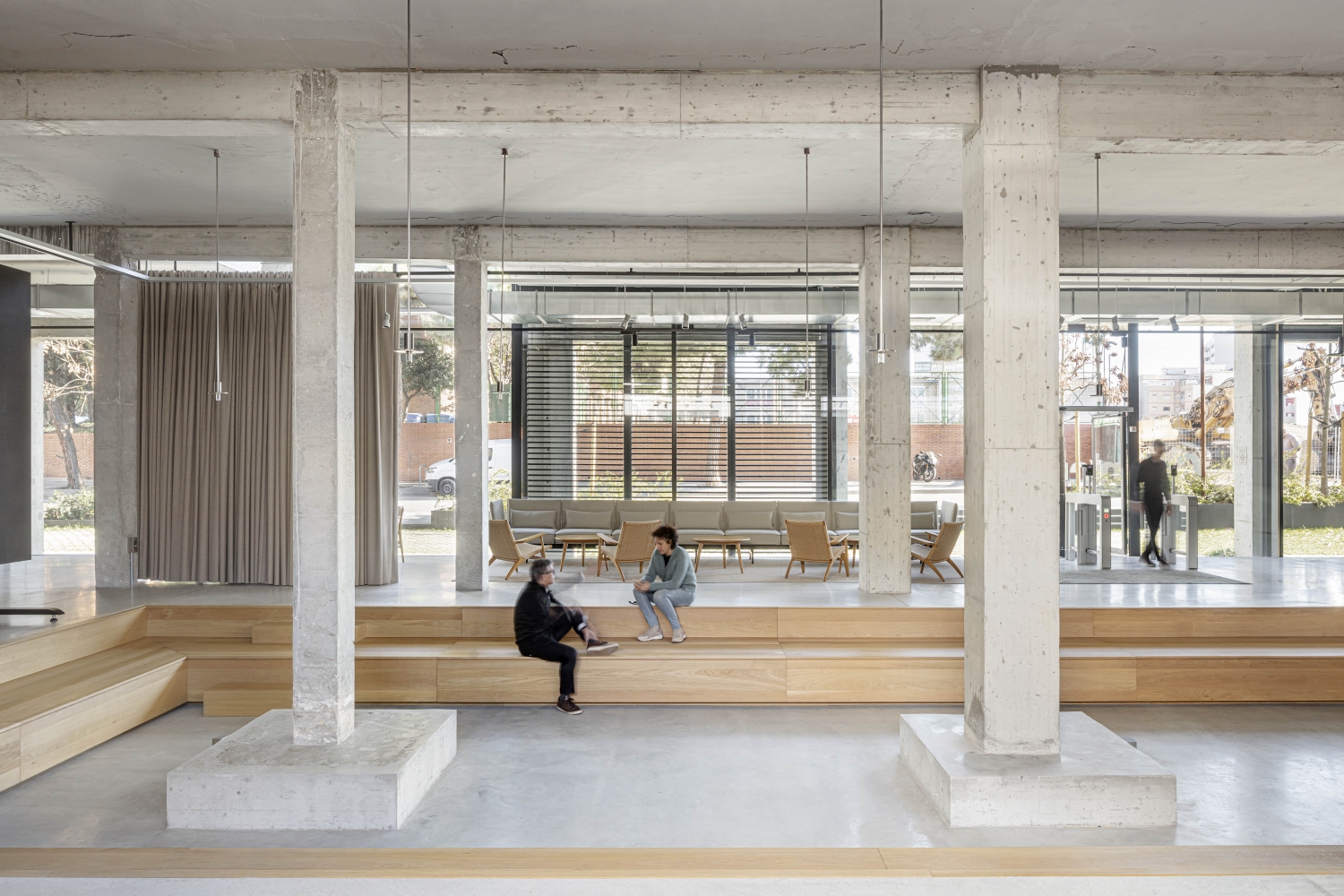
Renovation award. Galenicum New Headquarters by Harquitectes. Photography by Adrià Goula.
The design focuses on the renovation of an industrial building to house the new offices of a pharmaceutical company. The aim is to adapt the existing open space and offices to the needs of the company, which has 140 employees and various departments. It is proposed to improve the building envelope to regulate the temperature and organize the work space in two areas; on the one hand, a large open space typical of industrial activity and, on the other hand, an office building.
HABITAT AWARD: Basic Values of Architecture and Urbanism
Landscape Adaptation and Intervention in the Almadraba of Nueva Umbría, Lepe by SOL89 (María González García and Juan José López de la Cruz).
Promoters: D.G Territorial Planning, Urbanism, and Urban Agenda. Ministry of Development, Articulation of the Territory and Housing of the Junta de Andalucía.
Location: Huelva, Andalusia.

Habitat award. Landscape intervention in the Almadraba del Rompido by Sol89. Photograph by Fernando Alda.
The Real de la Almadraba, located in the Flecha del Rompido natural area, is an architectural complex built in 1929 that represented the art of tuna fishing on the Huelva coast. Abandoned in the 1970s, it was declared an Asset of Cultural Interest in 2015. The rehabilitation focused on industrial pieces and is completed with a pedestrian path that connects the Piedras River with the Atlantic Ocean. The rehabilitation is divided into two areas, the jetty and the diesel booth, of which barely any trace remained, and the boiler, the chimney, and the tar pit, in a better state of conservation, although in need of a strong intervention. The project seeks to recover the patrimonial and ethnological heritage of this ancient fishing art in harmony with the coastal environment of Huelva.
Three special distinctions.
SPANISH ARCHITECTURE AWARD (EX AEQUO)
House in red by estudio_entresitio (María Hurtado de Mendoza Wahrolén, César Jiménez de Tejada Benavides and Alvar Ruiz Villanueva).
Promoters: Private.
Location: Ávila, Castilla y León.

Spanish Architecture Award (ex aequo). House in red by estudio_entresitioby estudio_entresitio. Photograph by Roland Halbe.
The project is located in Calas de Guisando, Ávila, and stands out for its respect for the surrounding landscape and vegetation. The house in red blends harmoniously into the environment using stilt architecture on stilts, barely touching the ground. The house plan adapts to the topography and existing trees, growing and shortening between them. The house connects with the environment through different intermediate levels and offers private spaces connected to the exterior and the common area. The construction is carried out with laminated boards and sustainability and energy efficiency are prioritized.
SPANISH ARCHITECTURE AWARD (EX AEQUO)
Rehabilitation of offices 1822 by David Lorente; Josep Ricart; Xavier Ros; Roger Tudó - HARQUITECTES.
Promoters: Galenicum.
Location: Barcelona, Catalonia.
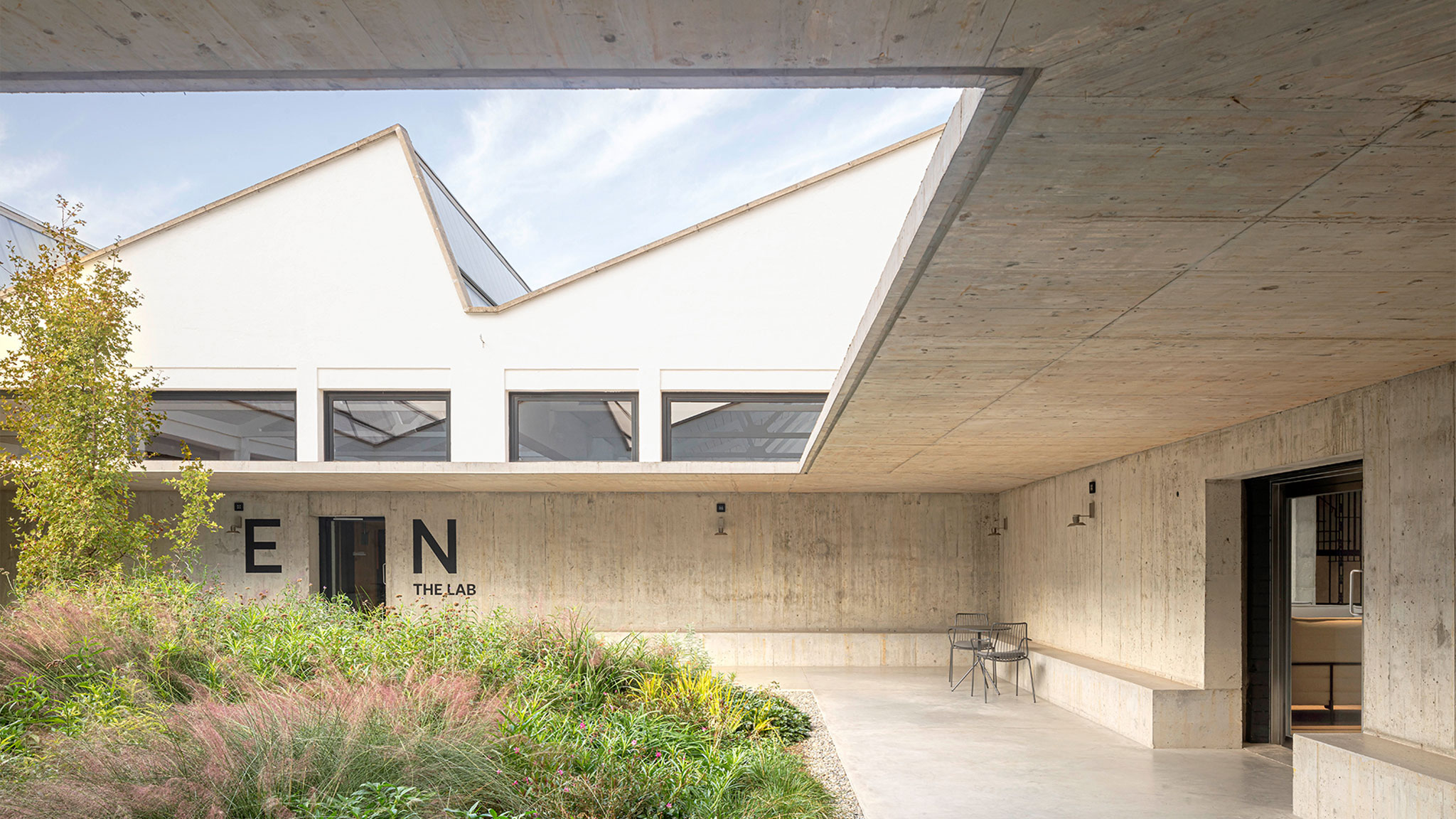
Spanish Architecture Award (ex aequo). Galenicum New Headquarters by Harquitectes. Photography by Adrià Goula.
The project focuses on the renovation of an industrial building to house the new offices of a pharmaceutical company. The aim is to adapt the existing open space and offices to the needs of the company, which has 140 employees and various departments. It is proposed to improve the building envelope to regulate the temperature and organize the workspace in two areas; on the one hand, a large open space typical of industrial activity and, on the other hand, an office building. The open space of the ships is interrupted by a central courtyard. In the offices, the different departments are organized into families or "tribes" with their own synergies. The proposal proposes that these tribes work in a circle, around a space with a strong plant component. Transparent wooden panels are used to create work areas and intermediate spaces and protected patios are integrated for leisure activities and rest.
"It is a timely and successful intervention in one of the many industrial buildings that become obsolete. it demonstrates the capacities and occasions of the volume suggested by the same original construction system and regenerates a new productive environment of high environmental and spatial quality through replicable and exemplary strategies."
SPANISH URBAN PLANNING AWARD
n'UNDO Plan #Manilva_towards a Local Urban Agenda by n'UNDO Technical Office (n'OT), represented by Beatriz Sendín Jiménez, Verónica Sánchez Carrera and Alejandro del Castillo.
Promoters: City Hall of Manilva (Málaga).
Location: Manilva, Andalusia.
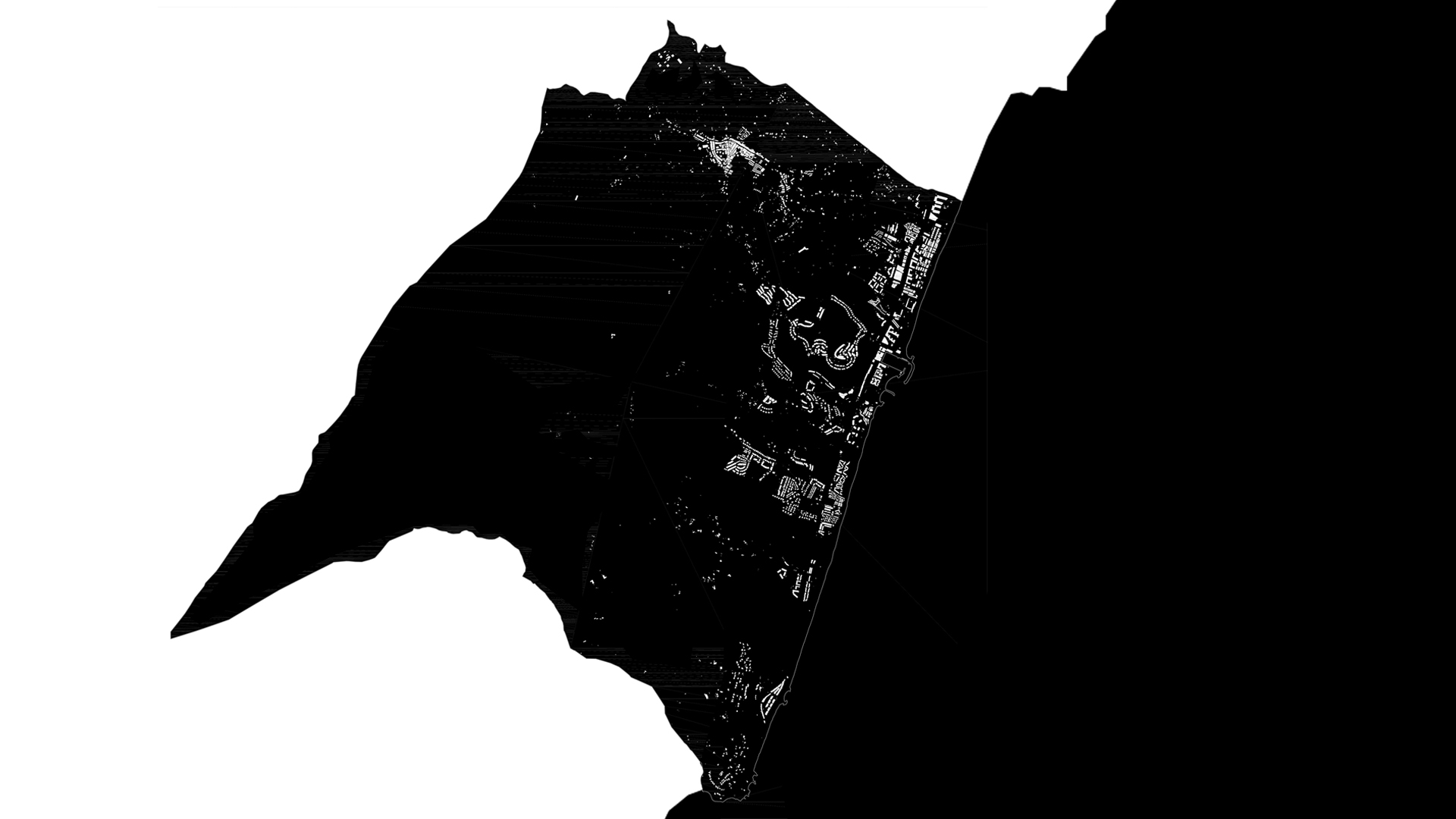
Spanish Urbanism Award. n'UNDO Plan #Manilva_towards a Local Urban Agenda by n'UNDO Technical Office (n'OT), represented by Beatriz Sendín Jiménez, Verónica Sánchez Carrera and Alejandro del Castillo.
This study is a tool for the improvement and regeneration of the urban and territorial environment of Manilva, with the criteria established by the national and international Urban Agendas, looking for a way to improve their standards and approach the recommended ranges in each of the different aspects. that define urban environments. A detailed analysis of current urban planning is carried out, identifying areas for improvement in different aspects such as sustainable land use, renaturation, decarbonization, resilience to climate change, access to quality housing, mobility, and accessibility, proposing up to 212 proposals that seek to improve the urban and territorial environment of Manilva in the short, medium and long term.
PERMANENCE AWARD
Murcia Congress Center by Paredes Pedrosa Arquitectos (Ángela García de Paredes; Ignacio G. Pedrosa).
Promoters: Autonomous Community of Murcia. Ministry of Tourism and Culture of the Region of Murcia.
Location: Murcia.
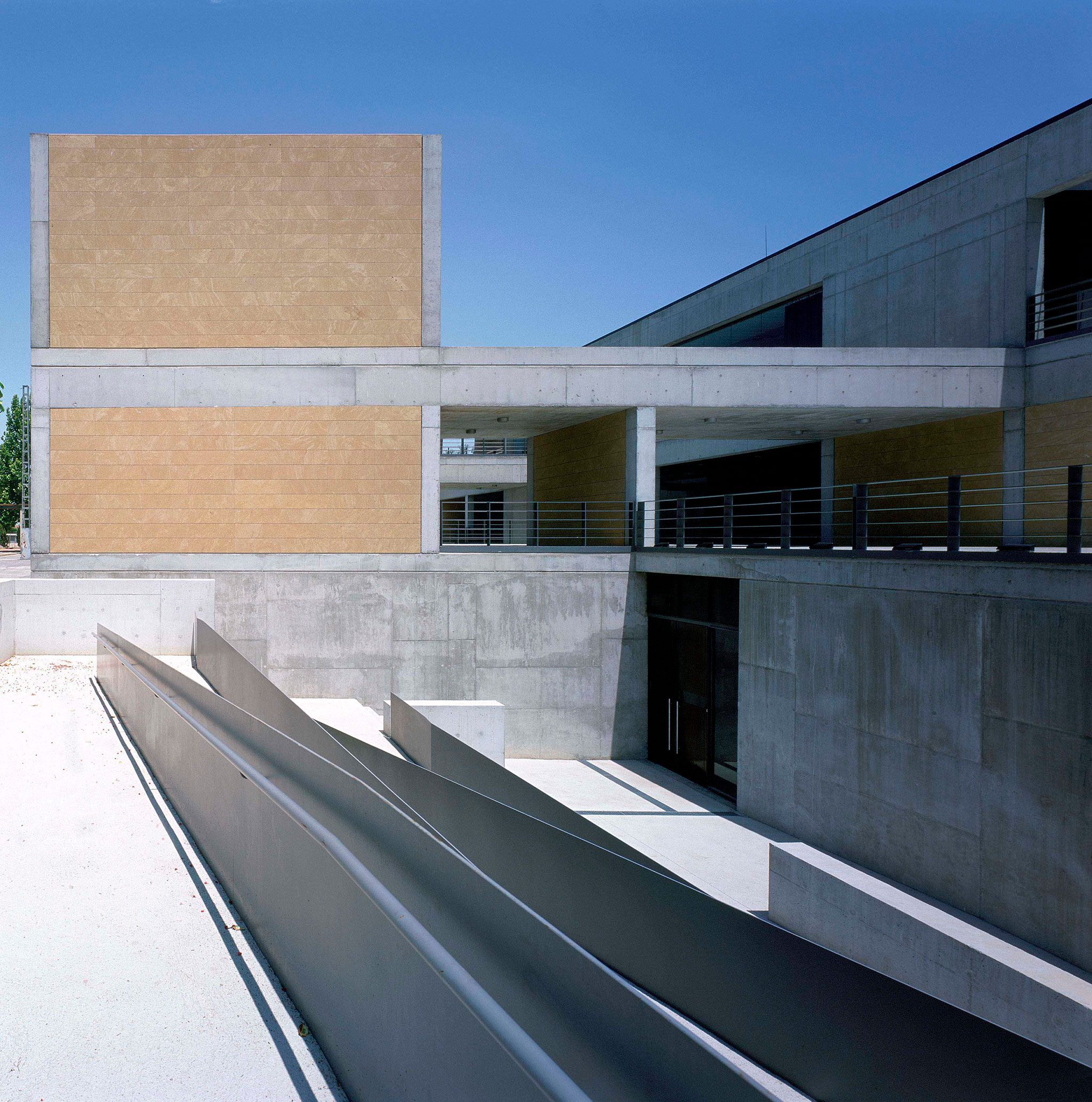
Permanence Award. Murcia Congress Center by Ángela García de Paredes y Falla; Juan Ignacio Garcia Pedrosa. Photography by Luis Asín.
The Congress Center completes the program of uses of the Murcia Auditorium, a work by Paredes Pedrosa in which exteriors and interiors come together and an area of naves and patios is configured in a garden that functions as a meeting point and creates a permanent visual relationship between both spaces. After twenty years since its construction and an intensive use complementary to the musical use of the Auditorium, its rooms have hosted congresses, exhibitions, events, and celebrations... The exterior and interior are confused through the reflection of the glass enclosures. In this way, the rooms follow one another in an open and luminous area, between patios, in which its dimensioning allows to control the direct entrance of the sun in continuous transparency. The project has received mentions and awards for its architectural design for decades.
"The projected equipment stands out for its timeless sobriety and simplicity which, together with its spatial solidity and versatility, manages to maintain a perennial balance. The Congress Center completes the program of uses of the Murcia Auditorium, whose emphatic triangular geometry did not allow for a physical attachment. The building, autonomous and independent of the auditorium, is associated with it based on its materials and color range, enhancing the open spaces as an extension of both buildings and, in this way, creating a space for meeting and a relationship between the two. permanent visual, which maintains its interest and validity."
The Jury in charge was made up of the second vice president of the CSCAE, Moisés Castro Porto (as president of the Jury), Nuria Matarredona (general director of Urban Agenda and Architecture of the Ministry of Transport, Mobility and Urban Agenda), Juan Carlos Sancho Osinaga (architect with recognized building professional experience), Sara de Giles Dubois (architect with recognized building professional experience), Agnieszka Stepien (expert in innovation and entrepreneurship), Manuel Herrero Sánchez (president of the Union of Associations of Urban Planners Architects), Javier García Solera (Permanence Award in the previous edition of the ARQUITECTURA Awards), Edgar González (expert in architectural dissemination), Mª José Peñalver Sánchez (CSCAE treasurer and member of the Awards and Distinctions Working Group), Paco Sanchis (CEO of COMPAC) and Laureano Matas Trenas (general secretary of the CSCAE).
























































